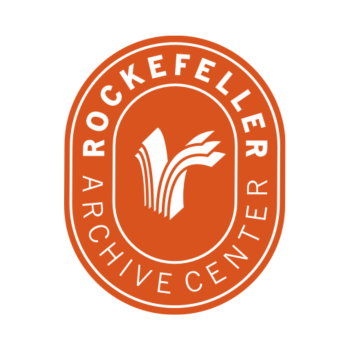
History
The Knight brothers’ passion for journalism and communities found its spark in northeast Ohio.
Knight Foundation, a private, independent foundation, originated with the Knight family’s belief in the value of education. The father of John S. and James L. Knight, editor and publisher Charles Landon Knight, had a tradition of helping financially strapped students pay for college. To honor his memory, the brothers established the Knight Memorial Education Fund in 1940 to provide financial aid to college students from the Akron area. The fund existed until December 1950 when its assets of $9,047 were transferred to the newly created Knight Foundation.
Incorporated in the state of Ohio, and independent of the brothers’ business interests from the start, Knight Foundation was organized principally to carry out the work of the Knight Memorial Education Fund. Even then, the foundation made small grants to local educational, cultural and social service institutions as well as to a few journalism-related causes.
Newspaper contributions stopped in 1965 with the foundation’s first major infusion of assets – a bequest of 180,000 shares of Knight Newspapers stock from the Knights’ mother, Clara I. Knight, who died that November. Faced with the prospect of administering a much larger financial aid program, the board of trustees voted in 1966 to end assistance for college students and to replace it with grants to colleges and universities. Over the next few years a limited number of cultural and educational institutions in Akron, Miami, Charlotte and Detroit – cities where the Knights owned newspapers – were added to the foundation’s list of grant recipients. For the first 10 years, the foundation’s assets came from contributions from the Akron Beacon Journal and The Miami Herald, and personal gifts by Jack and Jim Knight. Other Knight newspapers began to contribute small amounts in the early 1960s – a move that led to a limited number of grants to cities from which the contributions came.
A turning point came in 1972 when trustees authorized the sale of Clara Knight’s stock, raising more than $21 million. The contribution increased the foundation’s assets to more than $24 million and initiated an expanded grant program focused on the growing number of cities where the Knights published newspapers. Journalism, especially the education of journalists, became a matter of more pronounced funding interest.
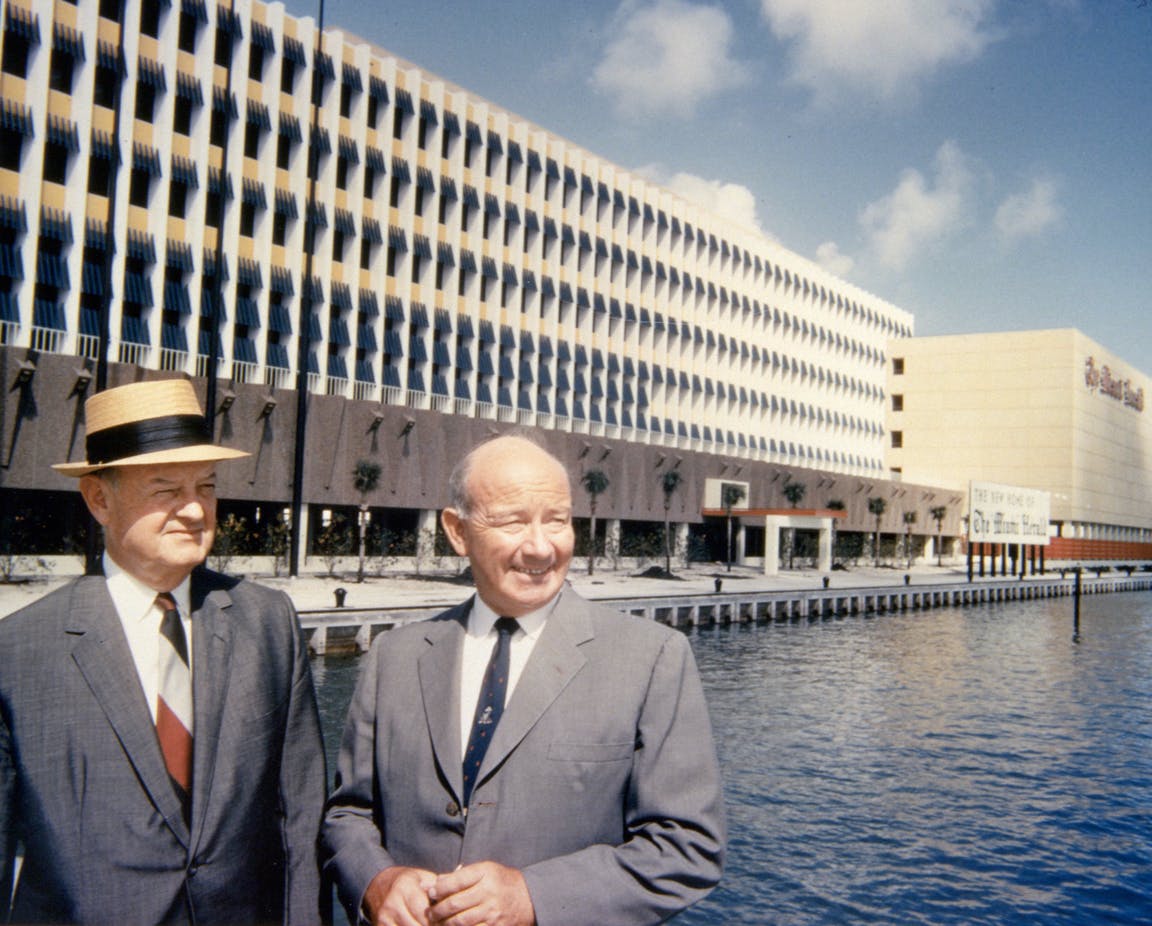
Laying the Cornerstone
Several events in 1974 laid the cornerstone for a much larger Knight Foundation. Jack Knight’s wife, Beryl, died, and he underwent major surgery, creating concern among his associates about the future of Knight Newspapers. Concurrent with these circumstances, Knight Newspapers merged with Ridder Publications to create Knight-Ridder Inc., at the time the largest newspaper company in the country. Jack Knight was its biggest shareholder.
Lee Hills, former president of Knight Newspapers recognized that Jack Knight’s status as Knight-Ridder’s largest shareholder placed the new company in a precarious position. If the elder Knight died, leaving the bulk of his estate to his heirs, they would be forced to sell most of their stock to pay the estate taxes. That would leave the company vulnerable to management by outside interests and possibly a takeover by those who understood little or nothing about newspapers and less about journalism. Hills, architect of the merger, headed the newly formed company as chairman and CEO. A close friend and associate of the Knights for more than 35 years, Hills was the first person outside the family to head Knight Newspapers. He had also been a foundation trustee since 1960.
Recognizing that both Knight-Ridder’s future and Jack Knight’s legacy of quality newspapers and journalistic integrity were threatened by such a scenario, Hills moved slowly and gently to present his friend with another option: leaving the bulk of his estate to the foundation.
The gentle persuasion worked. Knight rewrote his will. Signed in April 1975, the will left the bulk of Jack Knight’s estate to Knight Foundation.
That year the foundation acquired its first office and hired its first two full-time employees. Ben Maidenburg, a Beacon Journal news executive, was named president. Maidenburg had been a foundation trustee since 1957 and had served as the foundation’s part-time manager.
Over the next few years the foundation focused on educational and cultural grants in the 11 cities where Knight Newspapers had publishing ventures. In addition, journalism education and free-press issues emerged as a foundation interest with almost 25 percent of grants supporting journalism-related causes.
Maidenburg fell ill a little more than a year after taking the reins. Jack Knight asked C.C. Gibson, a friend and Akron civic activist, to fill in. Gibson was named president in 1978.
A New Chapter Begins
One of Jack Knight’s directives to trustees during his final years was to consider the foundation’s future. The outcome was an early and largely informal strategic planning exercise that resulted in direct statements from Jack and Jim Knight about foundation governance and grant-making. Their preferences reflected a desire for optimum flexibility, Jack Knight wrote “on the grounds that a truly effective foundation should have freedom to exercise its best judgment as required by the times and conditions under which they live.”
Jack Knight died on June 16, 1981. The task of settling his estate required five years. When the final transfer of funds to the foundation occurred on May 5, 1986, the distribution from the bequest totaled $428,144,588, making Knight Foundation the 21st largest U.S. foundation based on asset size.
During that period, Hills – at the request of Jim Knight, the foundation’s new chairman – guided the board in an intense strategic planning process. The new chairman declared the importance of ensuring that the foundation could manage the dramatic increase in its assets. In the future, Jim Knight said, operating the foundation “will be like running a major national institution. The job will require outstanding talent and leadership.”
That strategic review resulted in the creation of a new governing structure as well as programming and financial policies. This planning process has served as the blueprint for the foundation’s work ever since.
In grant-making, a formal Cities Program emerged focusing on all communities where the publishing company oversaw newspapers. In journalism, the foundation built on the Knights’ legacy of support for education as the cornerstone of quality journalism by establishing, salvaging or strengthening some of the profession’s most prestigious midcareer fellowship programs for journalists. Host institutions included Harvard, Yale, Columbia, MIT, Michigan, Maryland and, notably, Stanford, where the John S. Knight Fellowships were established in 1982.
Soon thereafter, the board created separate programs for education and arts and culture, the two fields in which the foundation had traditionally made most of its local grants.
A key change in leadership occurred in February 1988 as Creed Black, a veteran news executive and former publisher of the Lexington Herald-Leader, assumed the presidency. Under Black’s leadership the foundation’s national presence grew with such high-profile efforts as the Knight Commission on Intercollegiate Athletics, a blue-ribbon body that continues to advocate for the reform of college athletics; the Knight Chairs in Journalism program, which seeks to elevate the quality of education at the nation’s best journalism and public policy schools by attracting notable working journalists to serve as educators through endowed chairs; and the National Community Development Initiative, the largest philanthropic collaboration in U.S. history. As a founding member of NCDI (now Living Cities), Knight Foundation collaborates with other national grant-makers and lenders committed to revitalizing America’s great urban centers.
In 1990, Knight trustees voted to relocate the foundation’s headquarters from Akron to Miami, where several board members lived or spent considerable time. Simultaneously, the staff nearly doubled to 14 in recognition of the need for more sophisticated oversight of the foundation’s $522 million portfolio.
Jim Knight’s Bequest
Jim Knight died in February 1991, leaving what became a $200 million bequest to the foundation. By this time, the newspaper company the Knight brothers founded and the foundation were operating in 26 U.S. cities.
Hills was elected to succeed Jim Knight as chairman, while W. Gerald Austen, M.D., an internationally known heart surgeon and the surgeon-in-chief at Massachusetts General Hospital, was elected vice chair to succeed Hills. Dr. Austen, a board member since 1987, was the Knights’ physician and longtime friend.
Aware that Jim Knight’s bequest made the strategic planning process even more timely and important, the board undertook an extensive exercise that culminated in a decade of initiatives and more focused grant-making.
The Cities Program was renamed the Community Initiatives Program, and seven areas of special interest were identified as funding priorities: arts and culture, children and social welfare, citizenship, community development, education, homelessness and literacy.
Also launched under the auspices of the revamped program was the Community Foundations Initiative. It has now provided more than $66 million to either enlarge or establish donor-advised funds at community foundations in cities and towns where the foundation made local grants.
Trustees adopted a grant procedure to expedite funding when disasters affected Knight communities. The largest commitment was $10 million for the recovery and rebuilding of Dade (now Miami-Dade) County following Hurricane Andrew in 1992. The board also approved $1 million in grants after the Red River flood and subsequent fires destroyed much of Grand Forks in 1997. After the terrorist attacks of Sept. 11, 2001, the board approved a $10 million program to aid direct service providers in Knight communities affected by those events. And a $1 million grant helped Biloxi, Gulfport and their sister south Mississippi communities undertake long-term rebuilding exercises after Hurricane Katrina devastated the Gulf Coast in August 2005.
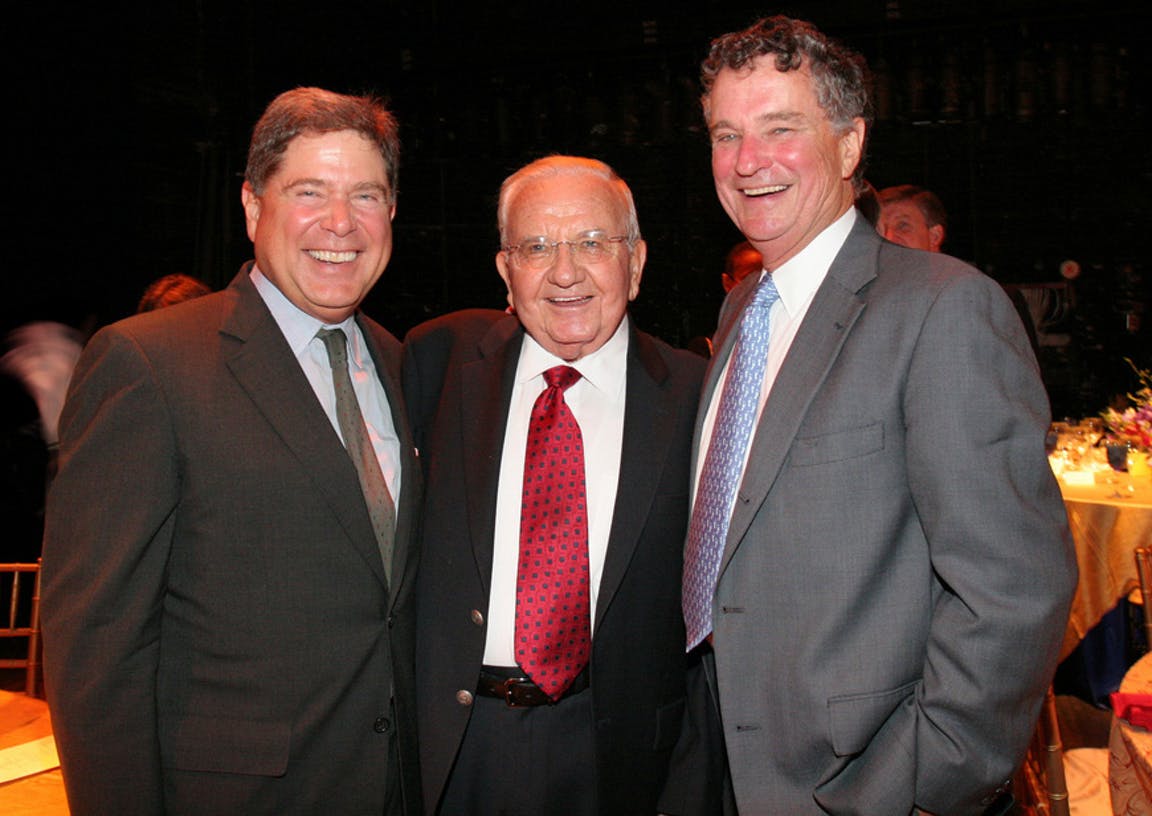
26 Participating Communities
During the early 1990s, the 26 cities covered by the Community Initiatives Program remained constant because Knight-Ridder neither sold nor acquired newspapers. However, a series of company purchases and sales in the mid-1990s prompted a board review of the geographic focus of the local funding program. In 1998, trustees decided the program should cover the 26 cities that had been eligible for local grants at the time of Jim Knight’s death in 1991. The decision ended the practice of the foundation following the company as it bought or sold newspapers throughout the country.
Journalism proved an especially fertile area for initiatives dealing with educational needs, free press and First Amendment issues. In 1993 the Knight International Press Fellowships, administered by the International Center for Journalists, were established to enable U.S. journalists and media executives to go overseas to provide professional advice and training in emerging democracies.
Through the Education Program, the foundation forged alliances with such national groups as the National Center for Family Literacy, New American Schools and Teach for America; many of these organizations brought their programs to the foundation’s cities.
Through the Arts and Culture Program, the foundation launched two initiatives in the 1990s. The Magic of Music symphony orchestra initiative provided grants to symphony orchestras willing to engage their entire organizations in experiments designed to generate a greater sense of excitement about the concert-going experience and a more vital relationship between artists and audiences. The second initiative, the Museum Loan Network, was a collection-sharing program administered by MIT that aimed to get artworks out of storage in one museum and onto the walls of another. At their conclusion, both were recognized for helping to transform their respective fields.
On Jan. 1, 1993, the foundation became the John S. and James L. Knight Foundation to honor the memory of the brothers who had created it. A year later the foundation incorporated in the state of Florida.
Leadership Changes
A review of the strategic plan in 1995 also served as a catalyst for a change in leadership. Hills stepped down as chairman in 1996 and was succeeded by Vice Chair Austen. Board member Jill Ker Conway, former president of Smith College and a visiting scholar at MIT, served as vice chair under Austen from 1996 to March 2005. She was succeeded as vice chair by Robert W. Briggs, head of the Ohio law firm of Buckingham, Burroughs and Doolittle and a noted leader in local philanthropy.
In February 1998, Black retired as president and was succeeded by Hodding Carter III, a nationally known public affairs journalist and former Mississippi newspaper editor and publisher. Carter had occupied the Knight Chair in Journalism at the University of Maryland.
Lee Hills died in February 2000 at the age of 93. The blueprint on which the foundation operates was largely designed and drawn by Hills. His vision and thoughtful guidance had steered the foundation successfully into a new century. The next key steps were taken at a retreat that September when the board approved a five-year strategic plan mandating the most extensive reinvention in Knight Foundation’s history.
The 2000 strategic plan reasserted the foundation’s commitment to journalism excellence and significantly deepened its ties to its communities, positioning it as a proactive partner focusing on results. The newly named Community Partners Program promised greater resources from Knight Foundation directed over a longer period of time to a locally recommended, tightly focused set of community priorities. A National Ventures Fund continued to look for opportunity to incorporate national ideas into Knight communities.
Across the 26 Knight cities, the Community Partners Program deploys program directors who provide community leadership, seeking big ideas with the potential to transform a community, a system, a network. Each city benefits from the wisdom of a Knight Community Advisory Committee – a panel of local residents offering community connections and guidance on opportunities for funding.
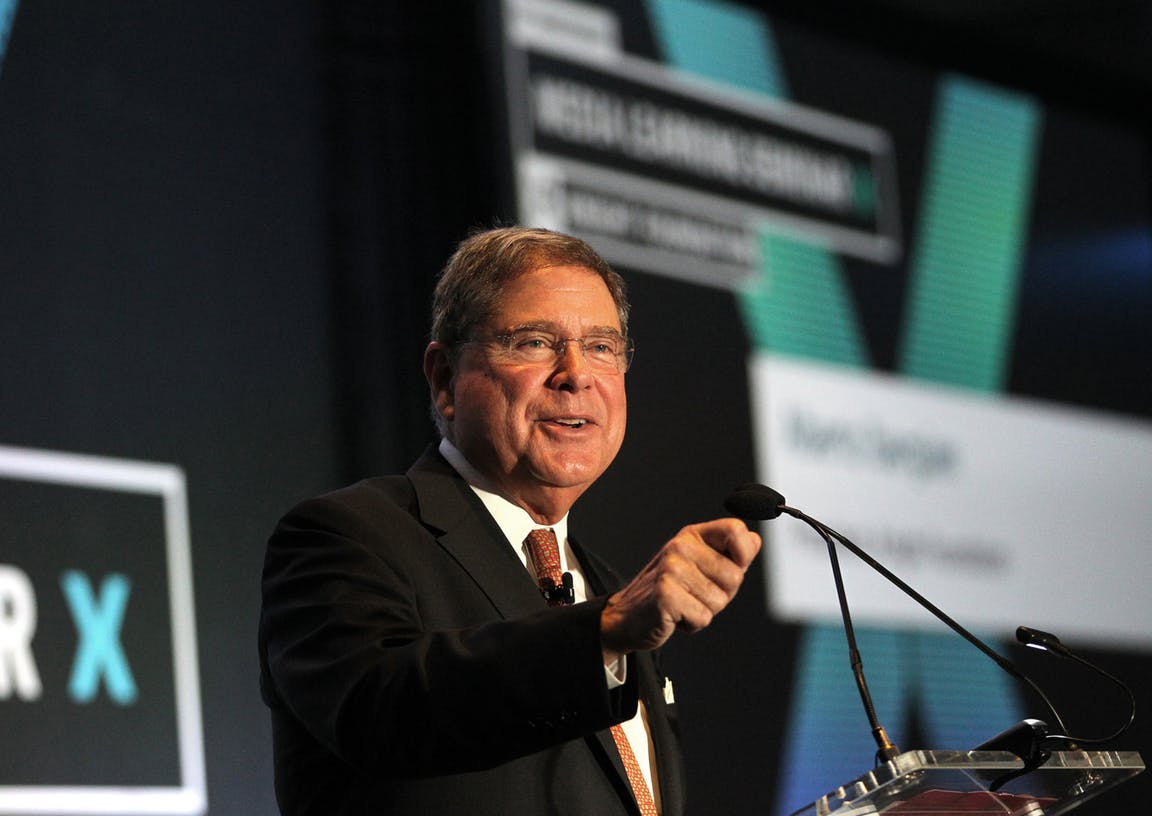
In July 2005, Alberto Ibargüen, president and publisher of the Miami Herald, took over the presidency of Knight Foundation. Ibargüen was a newspaper executive for more than 20 years, first at the Hartford Courant, then at Newsday in New York, before moving to Miami in 1995. Carter became Professor of Leadership and Public Policy at the University of North Carolina at Chapel Hill.
Knight broke new ground in the area of free speech and open-government issues in 2004, as a Knight-commissioned survey of 112,000 students, 8,000 teachers and 500 administrators showed that most high school students don’t know or care about the First Amendment. Knight promptly supported a nationwide campaign in schools, tied to Constitution Day, which promoted the right of free expression and led to more than 50,000 downloads of curricula for teachers. Subsequent surveys in 2006 and 2007 gauged students’ increasing reliance on the Internet for news and information.
In December 2005, the Knight board reviewed the strategic plan and directed the staff to continue looking for opportunities to fund transformational change in journalism and communities in pursuit of the Knight brothers’ legacy. Trustees complemented the signature Journalism and Communities programs with New and National Initiatives and the creation of a Transformation Fund to address big ideas and opportunities. By June 2006, the foundation surpassed the $1 billion mark in grants made since its founding in 1950.
In the fall of 2006, the foundation launched the Knight News Challenge, a call for ideas open to anyone, anywhere with an idea for using digital media to transform community news. More than $11 million went to 25 first-year winners announced in May 2007, and the second year elicited nearly 3,000 ideas. The success of the initiative spawned additional challenges, including the Knight Arts Challenge and the Knight Cities Challenge. Today, challenges are one of the primary ways the foundation finds new ideas.
Today Knight Foundation, with an endowment of $2.4 billion, has four program areas: Journalism, Communities, the Arts and Learning and Impact, which does assessments and research across the other three areas. The philosophy of the Knight brothers, that informed and engaged communities are the key to a healthy democracy, still guides its work.
In January 2024, Maribel Pérez Wadsworth became the new President of Knight Foundation.
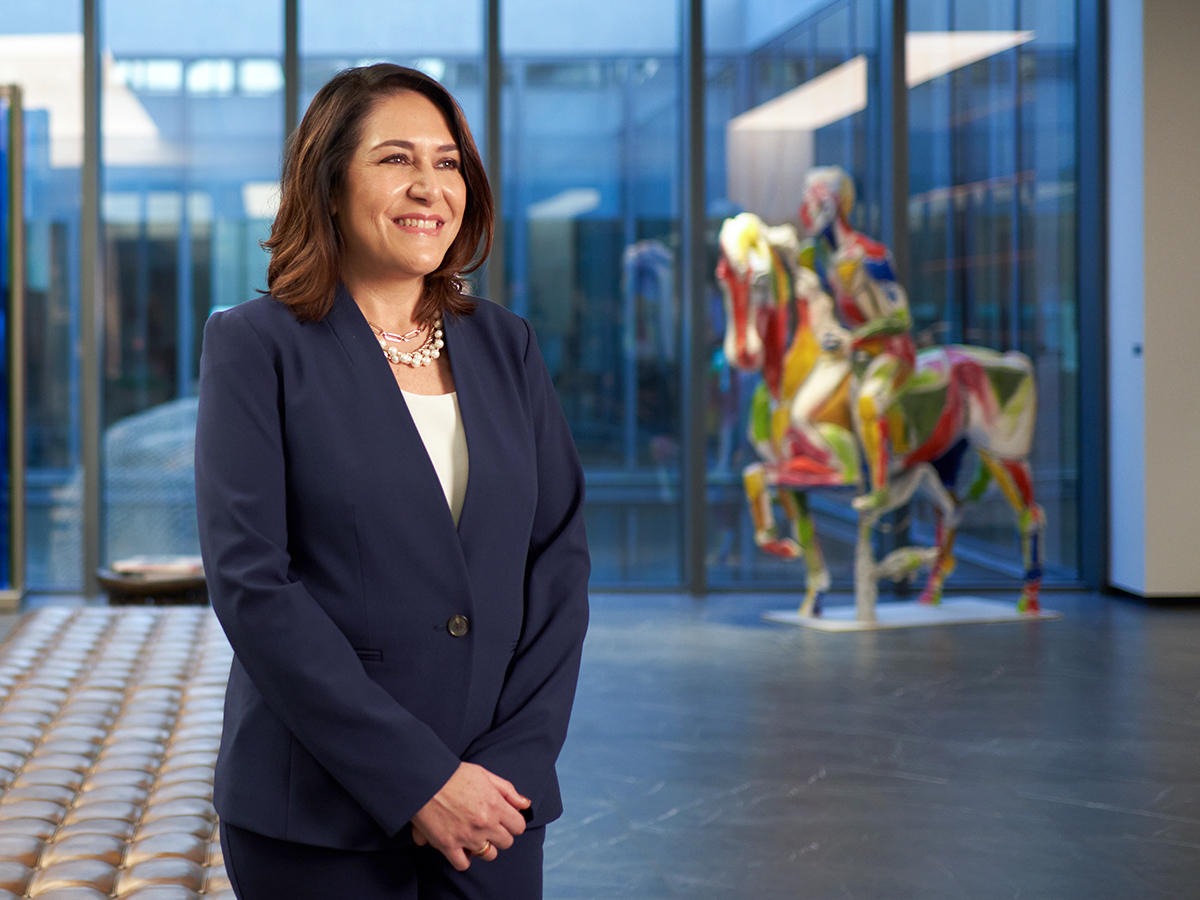
Read our Statement of Strategy.
Learn more about John S. Knight and his 1968 Pulitzer Prize for Editorial Writing.
John S. and James L. Knight Foundation History
Prepared by Virginia L. Henke, August 6, 1998.

